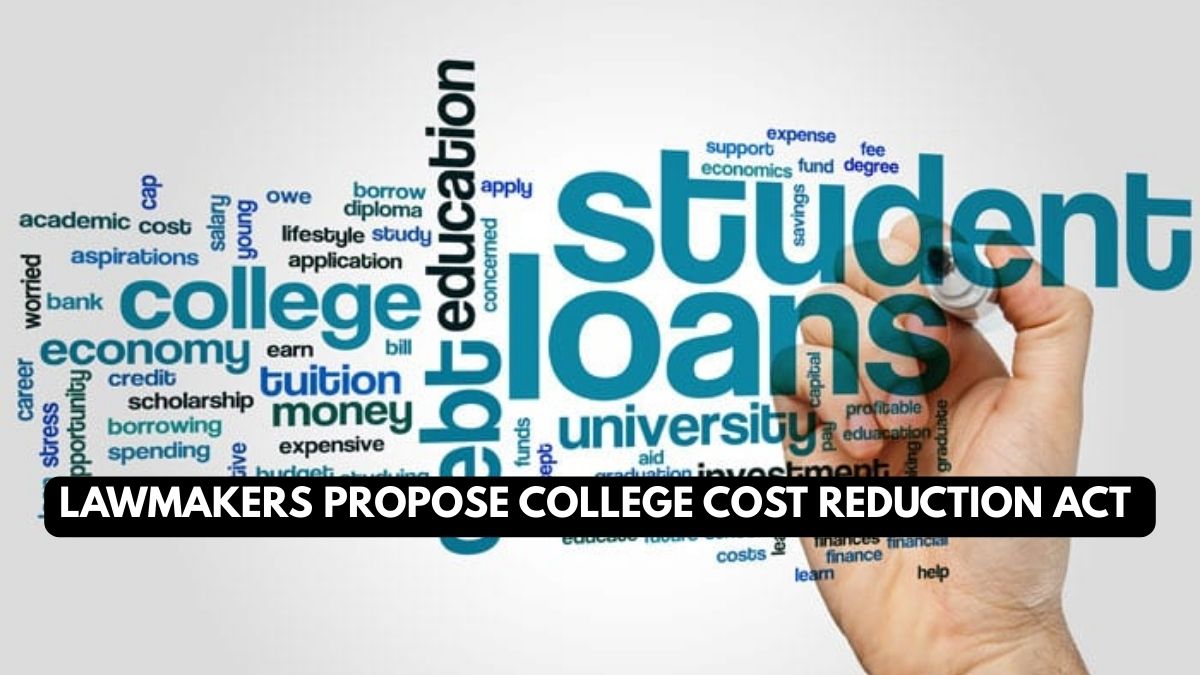In early 2025, House Republicans introduced a sweeping new proposal—the College Cost Reduction Act (CCRA)—which aims to overhaul how federal student loans are repaid in the United States.
This proposed legislation, known officially as H.R. 6951, promises to simplify loan repayments, cut federal costs, and increase accountability for colleges and universities. However, critics warn it could increase monthly loan payments and reduce loan forgiveness options for millions of borrowers.
Here’s a breakdown of the bill and what it could mean for current and future student loan borrowers.

Key Features of the College Cost Reduction Act
1. New Income-Driven Repayment Plan
At the heart of the CCRA is the introduction of a new income-driven repayment (IDR) plan. Under this plan, borrowers would be required to pay 10% of their discretionary income above 150% of the federal poverty level.
This is a major shift from the Biden administration’s SAVE plan, which allows borrowers to pay just 5% of income above 225% of the poverty level.
2. Eliminating Interest Capitalization and Origination Fees
The bill proposes ending the practice of interest capitalization, which occurs when unpaid interest is added to the loan principal, compounding debt over time. It would also eliminate origination fees that are currently charged on federal student loans.
3. Loan Repayment Cap
Borrowers would be protected from paying more than what they would under a standard 10-year repayment plan, preventing excessive lifetime payments on loans—especially for low-income borrowers.
4. Institutional Risk-Sharing
A groundbreaking component of the bill is risk-sharing for colleges. Schools would have to repay the government a portion of unpaid student loans if their graduates default or fail to repay their debt. This aims to hold institutions accountable for poor outcomes.
5. Restrictions on Federal Loan Access
The CCRA also calls for eliminating Parent PLUS and Grad PLUS loans, while capping how much students can borrow directly from the federal government. Critics argue this could reduce college access, especially for low-income families.
Potential Impacts on Borrowers
While the bill’s backers claim it simplifies and modernizes the student loan system, many experts warn that it could:
Increase Monthly Payments
Compared to the current SAVE plan, many borrowers—especially those with lower incomes—would see higher monthly payments under the CCRA.
Reduce Forgiveness Opportunities
The CCRA would make it harder to qualify for loan forgiveness programs, including Public Service Loan Forgiveness (PSLF), by restructuring repayment and increasing the time or amount needed for forgiveness.
Lower Affordability for College
Stricter loan caps and the removal of some loan types may reduce access to funding for college, especially for students attending graduate programs or expensive institutions.

Current Status of the Bill
As of April 2025, the College Cost Reduction Act has passed through the House Education and the Workforce Committee but has not yet been voted on by the full House or Senate. If passed, it would mark one of the most significant changes to federal student loan policy in over a decade.
Final Thoughts
The College Cost Reduction Act represents a new chapter in the ongoing debate over how to handle America’s growing student debt crisis. While it introduces reforms meant to promote fiscal responsibility and institutional accountability, many borrowers could face higher payments and fewer protections if the bill becomes law.
Whether you’re currently repaying student loans or planning to attend college soon, staying informed is crucial. Borrowers should regularly check updates on StudentAid.gov and consult trusted financial aid sources before making decisions.
This article has been carefully fact-checked by our editorial team to ensure accuracy and eliminate any misleading information. We are committed to maintaining the highest standards of integrity in our content.

Deepak Grover is a dedicated content writer at OTE News, specializing in government affairs, public policy, and current events. With a keen eye for detail and a passion for factual reporting, he ensures readers receive accurate and insightful news. Deepak holds a degree in Political Science and has experience in research-driven journalism.
When not writing, he enjoys reading historical books, exploring hiking trails, and staying updated with global political trends. His commitment to ethical journalism makes him a trusted voice at OTE News.




